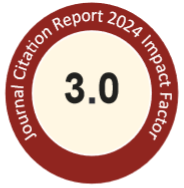Abstract
A precise and reliable analytical method to measure trace levels of sulfamonomethoxine (SMM) and N4-acetyl metabolite in tilapia samples using liquid chromatography-tandem mass spectrometry was developed. Optimized chromatographic separation was performed on C18 reversed-phase columns using gradient elution with methanol and 5 mmol/L of an ammonium acetate aqueous solution (adjusted to pH 3.5 using formic acid). This study investigated the pharmacokinetic properties and tissue distribution of SMM and its major metabolite N4-acetyl sulfamonomethoxine (AC-SMM) in tilapia after a single dose of 100 mg kg−1 body weight of orally administered SMM. Blood and tissues were collected between 0.5 and 192 h with 14 total sampling time points. SMM was rapidly absorbed, and extensively distributed in the bile and liver through systemic circulation. Enterohepatic circulation of SMM was observed in the tilapia body. Acetylation percentages were 45% (blood), 90% (liver), 62% (kidney), 98% (bile), and 52% (muscle). High concentrations of AC-SMM accumulated in the tilapia bile. At 192 h, AC-SMM concentration in the bile remained at 4710 μg kg−1. The ke value of AC-SMM (0.015 h−1) in the blood was lower than that of SMM (0.032 h−1). This study demonstrated effective residue monitoring and determined the pharmacokinetic properties of SMM and AC-SMM in tilapia. © 2018
ScienceDirect Link
Recommended Citation
Kung, T.-A.; Lee, S.-H.; and Wang, W.-H.
(2019)
"Determination of sulfamonomethoxine in tilapia (Oreochromis niloticus × Oreochromis mossambicus) by liquid chromatography-tandem mass spectrometry and its application pharmacokinetics study,"
Journal of Food and Drug Analysis: Vol. 27
:
Iss.
1
, Article 13.
Available at: https://doi.org/10.1016/j.jfda.2018.08.007
Creative Commons License

This work is licensed under a Creative Commons Attribution-Noncommercial-No Derivative Works 4.0 License.
Fulltext URL
https://www.sciencedirect.com/science/article/pii/S1021949818301510/pdfft?md5=371b18cb84000f5f4cc1c6652ea9c22f&pid=1-s2.0-S1021949818301510-main.pdf
Included in
Food Science Commons, Medicinal Chemistry and Pharmaceutics Commons, Pharmacology Commons, Toxicology Commons


Abstract Image